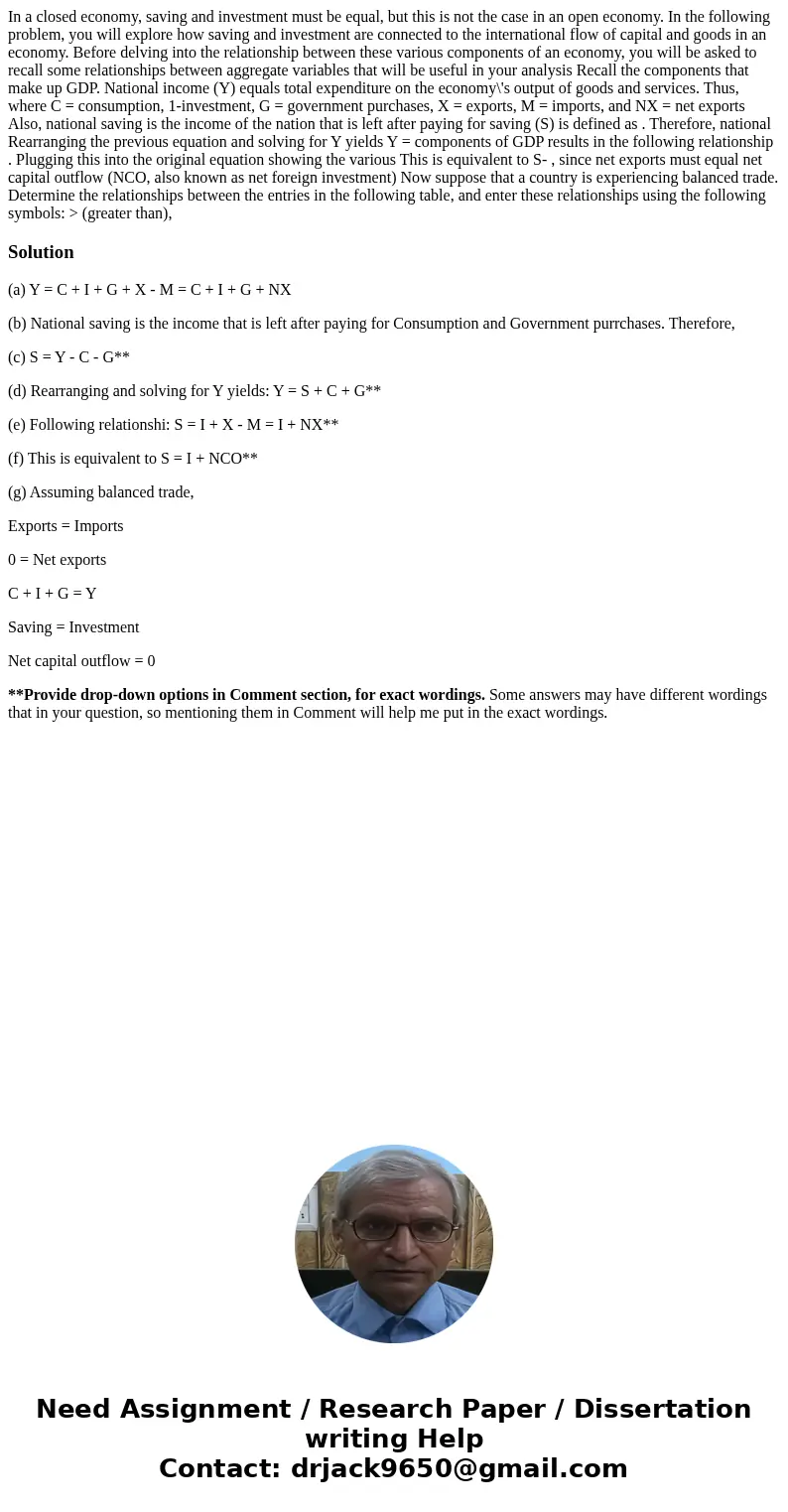In a closed economy saving and investment must be equal but
In a closed economy, saving and investment must be equal, but this is not the case in an open economy. In the following problem, you will explore how saving and investment are connected to the international flow of capital and goods in an economy. Before delving into the relationship between these various components of an economy, you will be asked to recall some relationships between aggregate variables that will be useful in your analysis Recall the components that make up GDP. National income (Y) equals total expenditure on the economy\'s output of goods and services. Thus, where C = consumption, 1-investment, G = government purchases, X = exports, M = imports, and NX = net exports Also, national saving is the income of the nation that is left after paying for saving (S) is defined as . Therefore, national Rearranging the previous equation and solving for Y yields Y = components of GDP results in the following relationship . Plugging this into the original equation showing the various This is equivalent to S- , since net exports must equal net capital outflow (NCO, also known as net foreign investment) Now suppose that a country is experiencing balanced trade. Determine the relationships between the entries in the following table, and enter these relationships using the following symbols: > (greater than), 
Solution
(a) Y = C + I + G + X - M = C + I + G + NX
(b) National saving is the income that is left after paying for Consumption and Government purrchases. Therefore,
(c) S = Y - C - G**
(d) Rearranging and solving for Y yields: Y = S + C + G**
(e) Following relationshi: S = I + X - M = I + NX**
(f) This is equivalent to S = I + NCO**
(g) Assuming balanced trade,
Exports = Imports
0 = Net exports
C + I + G = Y
Saving = Investment
Net capital outflow = 0
**Provide drop-down options in Comment section, for exact wordings. Some answers may have different wordings that in your question, so mentioning them in Comment will help me put in the exact wordings.

 Homework Sourse
Homework Sourse